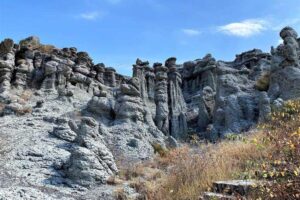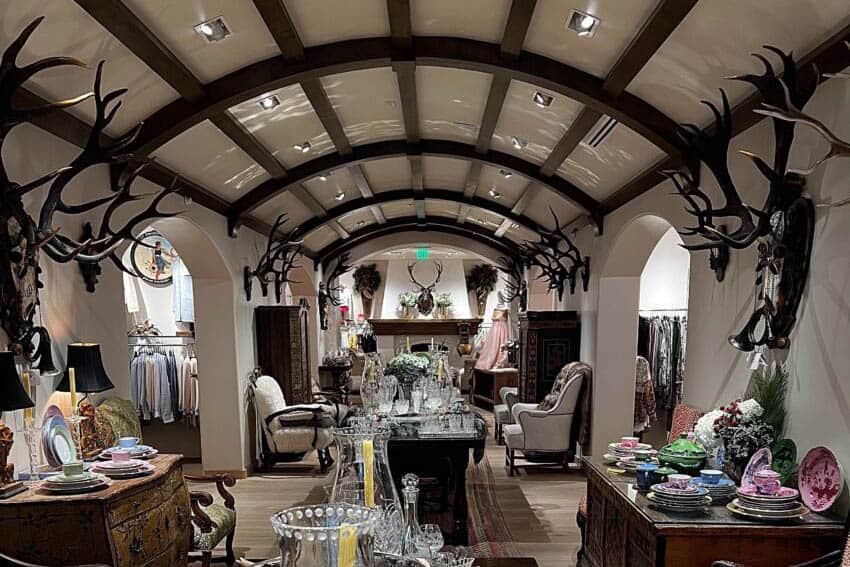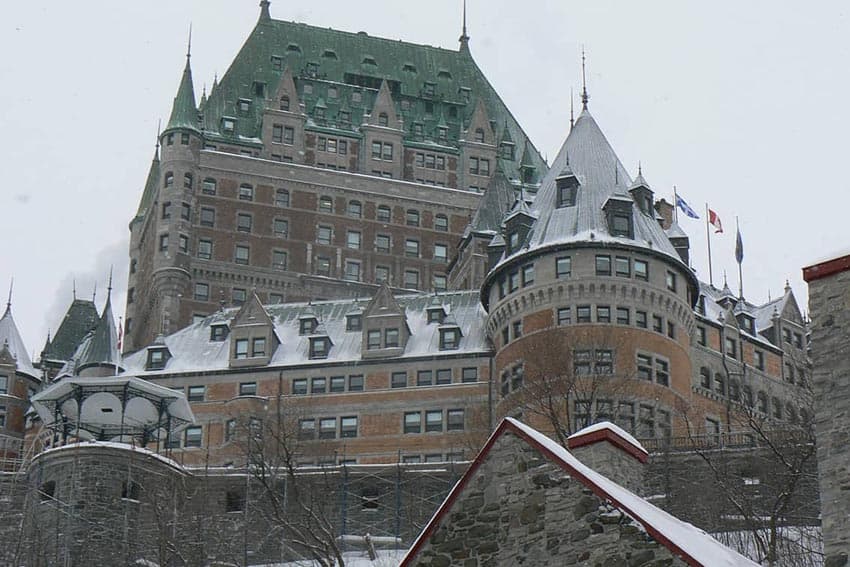
Skopje: a work in progress
By Anne Marie Dimech
With some places, you know exactly what to expect before you even get there. In other cases, you have no idea what awaits you. For one curious traveler, Skopje, Macedonia, fell into the latter category and then surprised her with its unusual mix of the very old and the brand new.
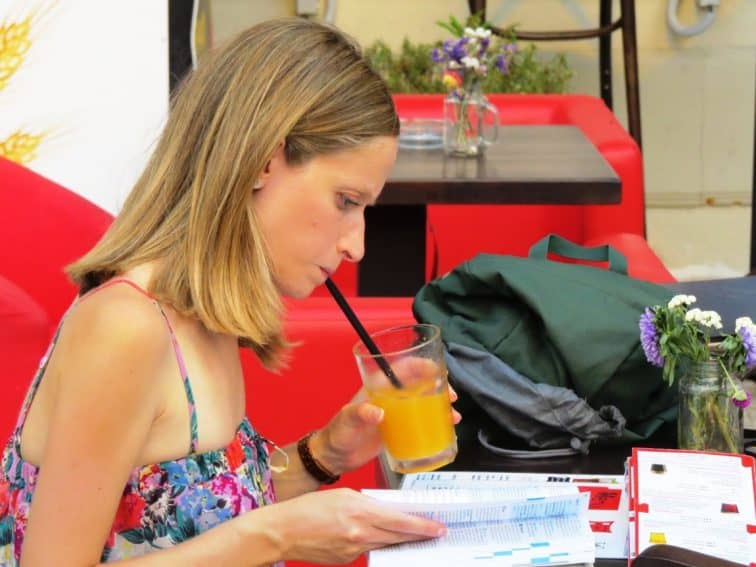
Before my trip there last August, the only thing I knew about Skopje was that it is full of monuments and the only thing I knew about my visit was that it was going to be very hot.
The Main Square
I was right on both counts. As we got off the bus at the terminal in Skopje, we were greeted by an oppressive heat wave that would accompany us throughout our time there, and as our taxi drove us into the centre, I noticed one grandiose monument after another in the city’s squares and roundabouts, with one particularly recurring theme of horses mounted by men in various poses.
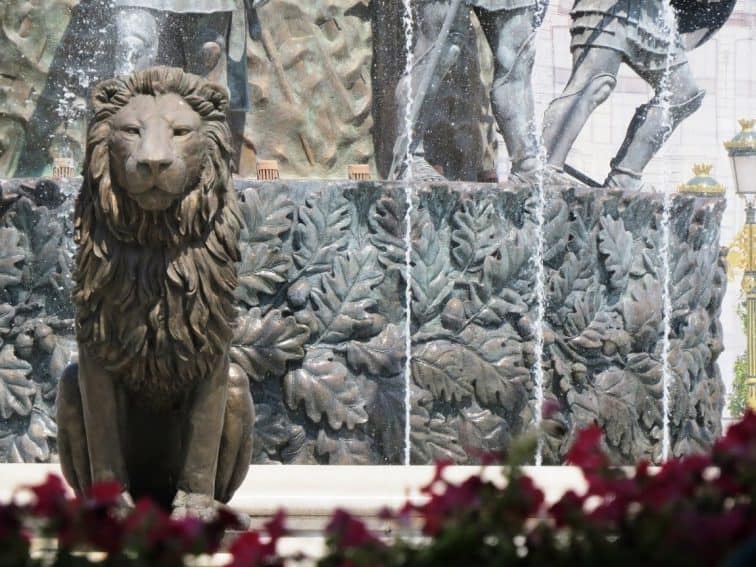
I soon found that these were, however, just a prelude to the real deal: the huge Warrior on a Horse that can be found preening on its pedestal in the sprawling main square, Plostad Makedonija.
This square is impressive, in part because of its vastness, but also due to the elegance of its buildings.
I found it especially atmospheric in the early evening when the lights come on and locals and tourists gather for drinks and dinner in the outdoor seating areas of the many bars and restaurants that line the square.
I especially enjoyed dining at the Pelister, where the outdoor restaurant area is embellished by plants and intricately wrought iron arches, the food is good, and photo ops of the Warrior on a Horse are just a few steps away from your table.
All those statues
My impression of the rest of the modernized part of the city center is more ambivalent. Walking away from the square towards the old bazaar there’s Stone Bridge (Kameni Most), a plain, sturdy landmark which has for centuries served as a passage across the Vardar River. This deposits you into another, smaller square which has had two gigantic monuments squeezed into it.
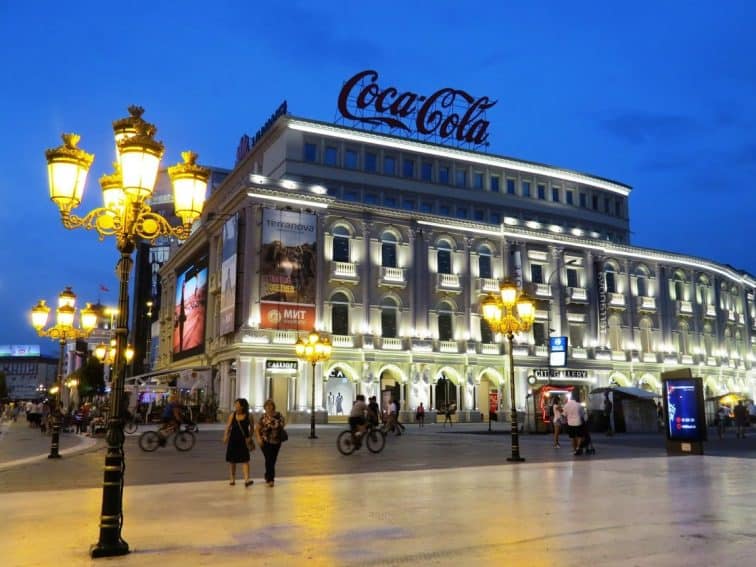
One is a fountain topped by a statue of a victorious Philip II of Macedonia, standing tall and looking across the river towards his son Alexander the Great, the aforementioned warrior who occupies pride of place in Plostad Makedonija. The second is another large fountain, this time dedicated to the Mothers of Macedonia and adorned by a number of statues depicting different stages of motherhood.
It is impossible not to appreciate the beauty of the individual statues, however, the overall effect is bewildering. The monuments seem overbearing and garish in a space that feels more like a thoroughfare than an actual square. In addition, when I visited there was a fair bit of construction work going on all around, which made the area seem dusty, untidy and unfinished.
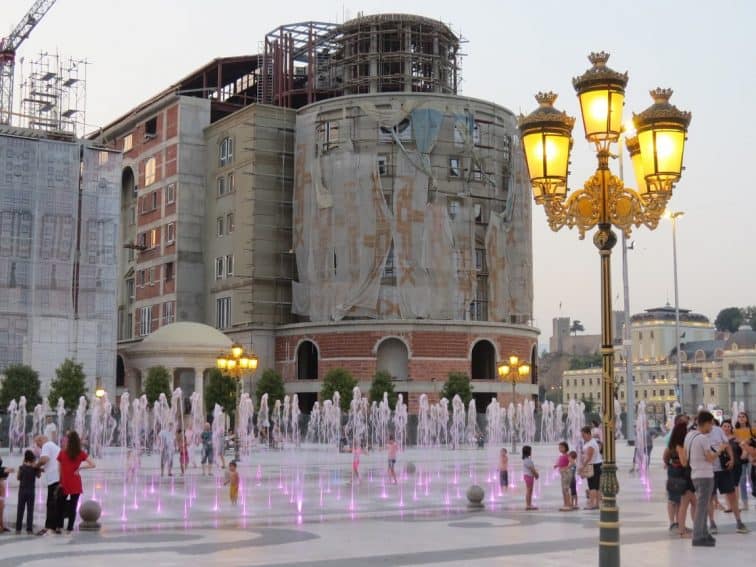
The old soul
Thankfully, this ill-conceived development is soon forgotten as the old part of town is reached. Skopje’s old bazaar (Stara carsija) is the legacy of 500 years of Ottoman rule in Macedonia, and finally reveals a bit of the soul of the city.
Yes, there are parts that have been taken over by rows of dingy, dodgy looking bars blaring out offensive music, but for the most part, it still feels refreshingly authentic.
By this, I mean that rather than a tourist amusement park, it looks like a place where a Skopje resident might plausibly spend a morning shopping and running errands. While there are some souvenir shops, the majority of the shops sell household goods, clothes, shoes, jewelry and wedding dresses.
I visited once in the afternoon and once in the morning, and without a doubt recommend saving the exploration of this area for the morning, since in the afternoon it was nearly eerily quiet, with a good number of shops already closed or in the process of closing.
The morning brought with it a bustle of activity, which made wandering around the bazaar much more interesting. The streets weren’t as narrow and convoluted as I’d hoped they’d be but this was more than made up for by the complete lack of the hustlers which I’ve come to expect whenever I visit such bazaars in other countries.
The shop owners we spoke to were polite and helpful; one even walked us to the Church of the Holy Salvation (Sveti Spas church), one of the sights we wanted to visit but had trouble finding.
Historic landmarks
The bazaar, which has been around in one form or another since at least the 12th century, packs in a good number of places of interest. Through a mix of chance, design, and lack of time, we only managed to visit three: the above-mentioned church, the Mustafa Pasha mosque, and Kale fortress, all of which can be found just above the Old Bazaar, a short distance away from each other.
In case you’re wondering, these are all historic sites; the bazaar is recognized as cultural heritage and has thus been protected from the fanciful building of monuments to which the rest of the city has been subjected.
Both Sveti Spas church and Mustafa Pasha mosque are well maintained and worth a visit, not least because they incidentally both sit within charming, peaceful courtyards. While a small entrance fee needs to be paid to access the church, entrance to the mosque is free of charge.

At the church, one of the guides explained that the church was partially built underground in order to ensure that its tower was no higher than any of the minarets in Skopje, and he also pointed out the famous carved wooden iconostasis.
Once we got to the mosque, we didn’t come across anyone and were free to roam around and explore both the inside of the mosque and the surrounding garden. Kale Fortress was similarly unmanned, but unlike the mosque, it looks like it’s been more or less abandoned.
It sits on the highest hill in Skopje and provides sprawling views of the city below, but there’s nothing that indicates what any of the ruins are, and access to some parts is difficult and unsafe.
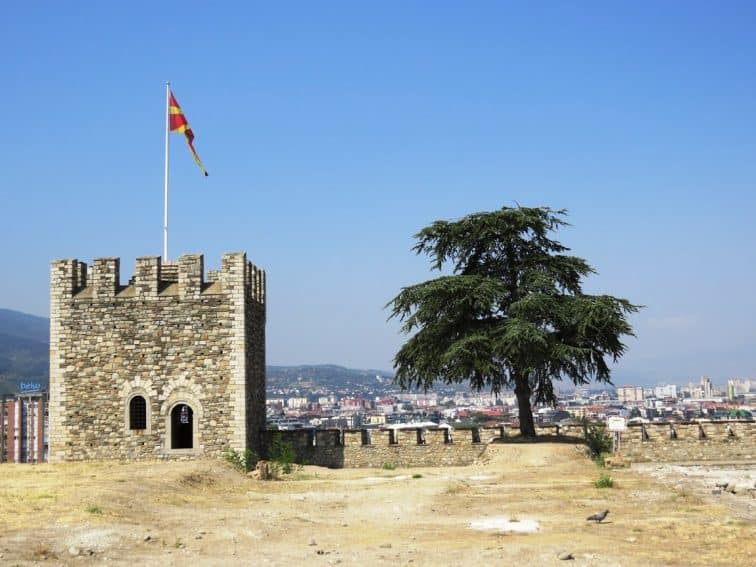
Back in the center of the bazaar, we stopped for a break at the kebab restaurant kebapcilnica Destan, which is situated on a busy corner, with its outdoor seating making it perfect for resting tired legs as you watch the world go by: the ideal way to wrap up a visit to the old bazaar.
Men at work
We spent our final few hours in Skopje walking around the newer part of the city, where various other places of interest, as well as a good number of smaller statues, are scattered among high street shops, hotels, and restaurants. Every now and again we encountered a large Skopje tourist map which indicated our location and included photos of the landmarks present in the surrounding area.
After a while, I noticed that quite a few of the pictures of these landmarks had little yellow ‘men at work ‘ signs next to them, which meant that these places of interest were still in the process of being built. And that’s when I understood how much of a work in progress the city truly is.
While Skopje is not an obvious tourist draw, I’d encourage anyone visiting the country to spend a day or two in the capital. I’m certainly glad that I did. My visit helped me to catch a glimpse of Macedonia’s past, get a good look at its present, and above all, feel the country’s eagerness to continue to grow and evolve into the future.
 Anne Marie Dimech is a pharmacist who has discovered that her wanderlust is incurable, so she alleviates the symptoms by traveling as often as possible. She lives on the island of Malta.
Anne Marie Dimech is a pharmacist who has discovered that her wanderlust is incurable, so she alleviates the symptoms by traveling as often as possible. She lives on the island of Malta.
Eurail Passes: What to Know about Buying a Europe Train Pass
- Saudi Arabia Might Be Your Next Getaway Spot - April 23, 2024
- Mongolia, the Land of Eternal Blue Sky - April 20, 2024
- These 9 U.S. National Parks Require Reservations in 2024 - April 17, 2024


